Travellers backpacking in Rio de Janeiro can expect nothing less than a mesmerising feast for the senses.
It is, deservedly, a hugely popular destination the world over, famous for it’s electrifying culture, captivating beauty, mouth-watering cuisine and, less-desirably, it’s notoriety for crime.

Those aside, perhaps one of the most astonishing things to us about Brazil‘s Rio was just how massive the city actually was.
We would encourage any traveller, particularly budgeting backpackers, to do a bit of research before finding yourself there. Why? Because in a large city like Rio, a bit of forward planning can help ensure your budget doesn’t go down the toilet and, more importantly, can help ensure your safety.
This blog post details our memorable week backpacking in Rio de Janeiro and aims to serve as a guide for other budget travellers visiting this enchanting destination.
The best things to do in Rio de Janeiro
If you’re reading this, then hopefully that means you’re already on your way to planning your trip to Rio. Kudos
Planning Tip: As noted, in a large city like Rio it can be handy to pick the places you want to go, sights you want to see etc., and then move on to where suits you best to stay based on the attractions you want to see. Easy, right?
A list of all the things to do in Rio would most likely run from head to toe but when time and budget are constraints, it’s best to simplify it down to some of the main attractions.
Visit Christ the Redeemer
Arguably the most recognisable landmark monument in Rio (perhaps even Brazil!), this iconic monument sits atop Corcovado mountain, towering 715m above the city below. A trip to the top surely has to be a goal for every traveller to Rio.

Luckily, getting there is pretty straight forward. There are three options to the top: by van (quite pricey), by walking (be ready for a challenge!) or by train (the happy medium).
We opted for an adventure on the train (79 reais). The journey take 20 minutes and is slow enough to allow riders to marvel at the dense forest which forms part of the Tijuca Forest National Park. Be sure to keep a look-out for monkeys!
There is a short walk to the final ascent which on arrival will leave you completely breathless.
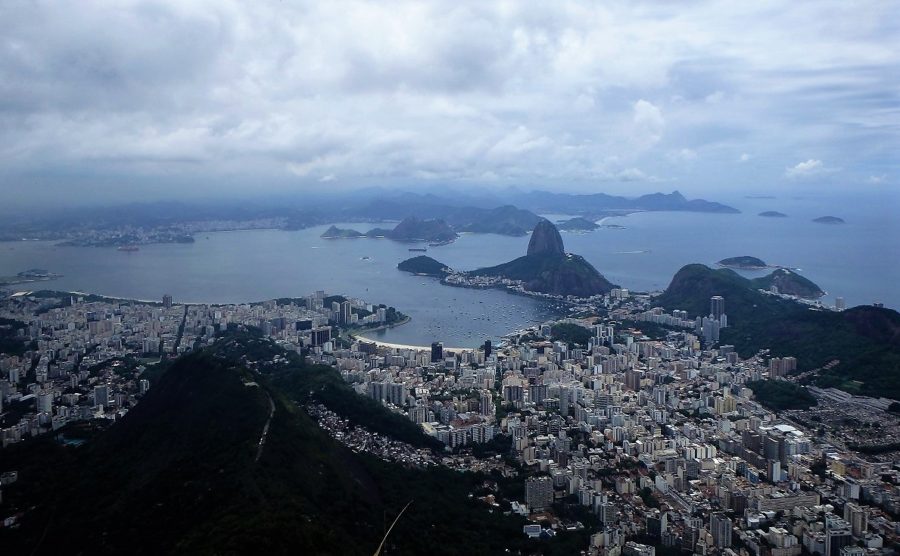

Note: If visiting in peak season, try to go early in the morning or late afternoon as the crowds and queues can get extensive.

Ride up to Pão de Açúcar
More commonly known as Sugarloaf Mountain (in English at least), the cable car up this 396m mountain has to be a contender for the top attraction in Rio.
From the ground station, the journey involves two carriages with a change halfway up, atop Morro da Urca. Each connection takes just 3 minutes (plus queue time) and offers unobstructed views the whole way up (except when you’re sandwiched by 64 other tourists).
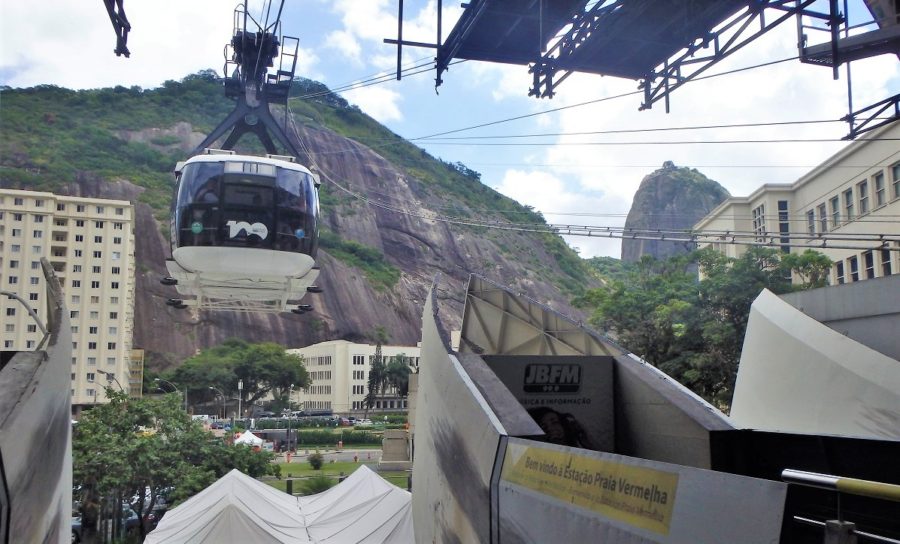
I won’t lie, we almost didn’t go up because of my anxiety (being trapped in a carriage at height isn’t good for me, haha) but I managed to push through and I am SO glad I did! The views are phenomenal!!


Tickets for both cable cars cost 160 reais ($33USD), so it’s not cheap. The best way to book, in our opinion, is to make your way to the ground station and buy your tickets on-site. This way you can ensure you have the weather for it. Just aim to go early to beat the crowds!
I should also include a note that you can hike up either Morro da Urca or climb Sugarloaf Mountain. We might have hiked had we done more research before the fact. Definitely something to consider when backpacking through Rio on a tight budget.
Take in the world’s largest mural
For those who love street art, when backpacking in Rio de Janeiro a visit to the Mural das Etnias is an absolute must!!

Created for the 2016 Rio Olympics by Brazilian street artist Eduardo Kobra, it is recognised as the largest mural in the world.
Five incredibly intricate and vivid faces stretch 15m (50ft) tall down a 190m (620ft) long wall lining Olympic boulevard. Each represents an indigenous nation from around the world.

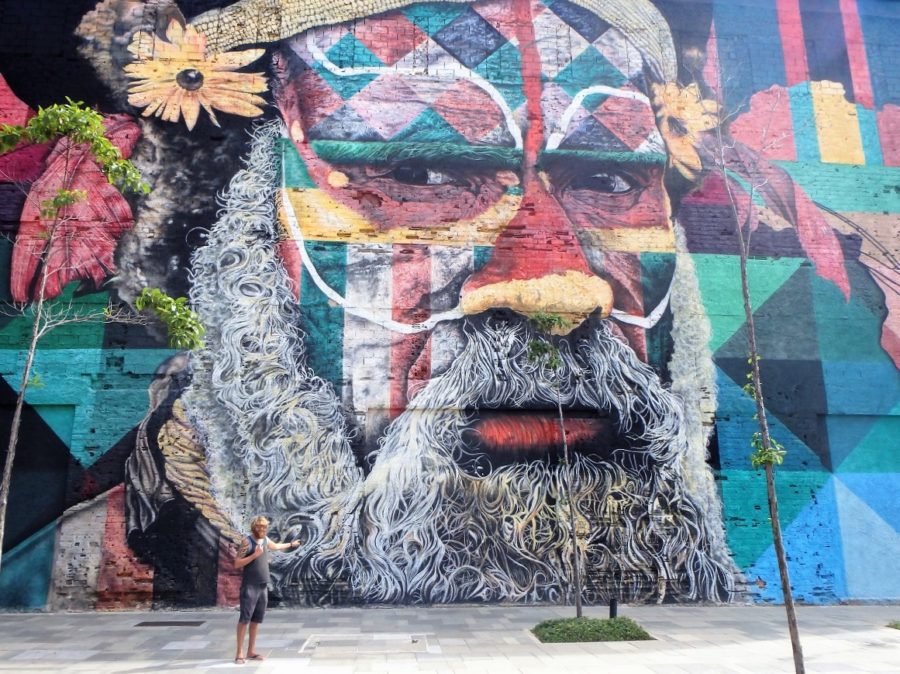
It is astounding how anyone could even contemplate such a feat! It is enthralling.
Check out the Museo do Amanhã
If you’re already making the trip to the aforementioned mural in the city’s Gamboa neighbourhood, then Rio’s Museo do Amanhã (Museum of Tomorrow) should also be on your list, even if just to view it’s exterior. It’s futuristic-style architecture is extraordinary!

Housed within, the museum focuses on what it refers to as ‘the Anthropocene’; the era in which humans have begun to influence the planet and what steps can be taken to reduce further ecological damage. You can find more info on the museum’s website here.
The exhibit is 30 reais to visit although there’s obviously no cost to admire the building from the port.
Walk the Escadaria Selarón
Another prestigious landmark in Rio – and a further example of the vibrancy of this city – is the eye-catching Selarón steps.
Straddling the Lapa and Santa Teresa neighbourhoods, the artwork was dedicated to the Brazilian people by a Chilean-born artist, Jorge Selarón.
Beginning in the 90’s, Selarón used an estimated 2,000 tiles to decorate 215 steps. Once the steps were completed, he then began tiling the walls!
Chill at the beach
The wonderful thing about Rio (or should I say another wonderful thing) is that you’re never too far from a beach. Despite being in a mammoth city. It’s mind-boggling!

Easily the most famous beaches that line Rio’s shores are those of Copacabana – cue Barry Manilow – and Ipanema.

If getting salty and sandy aren’t your thing then it’s still worth wandering down the promenade to take in the ocean views.
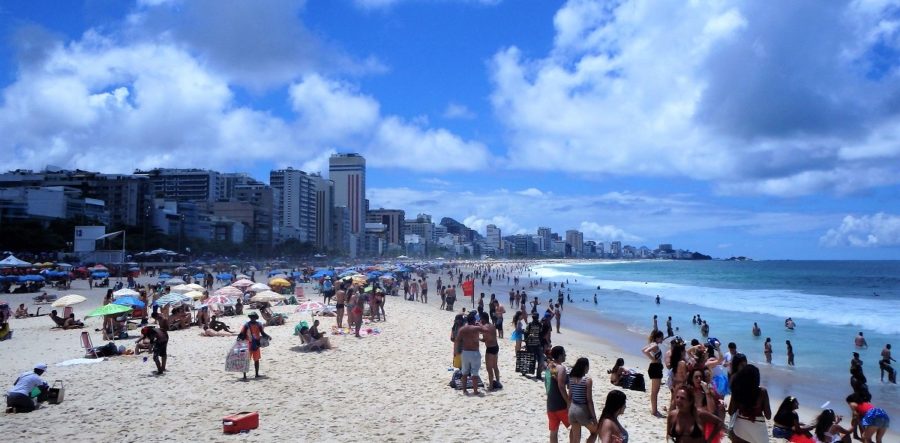
Caution: While beaches are great they are a hot spot for thieves so never leave your belongings unattended. Ever! Be sure to visit a beach with nothing but your clothes and a towel if you plan to leave items unattended.
Dine at a Churrascaria
I appreciate hungry meat-eaters no longer need to visit Brazil to experience an incredible Brazilian Steakhouse. They are fairly popular throughout the western world these days but if, like us, you want to visit one in Brazil then be sure to add it to your list of things to do in Rio.
Brazilian steakhouses (known locally as Churrascarias) are dotted all around the city. Here, diners can sample an array of exquisite meats loaded on skewers and brought straight off the fire to your table by passadores (meat waiters).
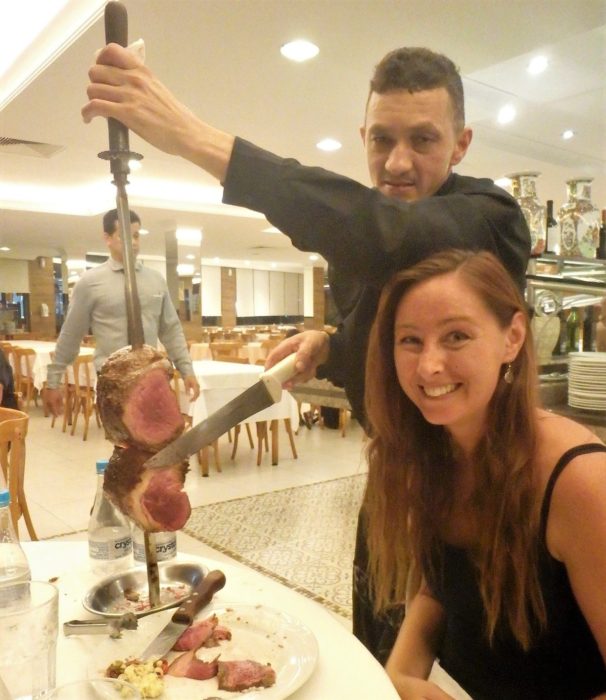
An outing like this should definitely be treated as an indulgence, as you do have to pay more for such an experience. Dinners start from $25 USD although are often more. Be sure to check out lunch deal which are often cheaper.
It will stretch the average meal budget but it’s worth it in our opinion. Even the salad bars are awesome.
Don’t fill up too fast; passadores often bring cheaper cuts first, finishing with the picanha (sirloin cap) which is simply divine!
Sample a Por Kilo
Of course we had to include another ‘attraction’ on the to-do list that involves food. Especially because when backpacking in Rio de Janeiro, it’s always a win to find good value local food.
This is why for lunch we suggest looking no further than your nearby ‘Por Kilo’. In cities like Rio they must have several in every neighbourhood.
If you figured it out from the name, how it works is that you grab a plate, visit the buffet and then literally pay for what the food weighs. Incredibly, this is regardless of what you choose.

Diners can easily get away with a decent lunch for around $6/$7. We greedy pigs couldn’t help but get carried away with loading our plates often spending closer to $10.
Party with the locals
I challenge even the most accomplished of socialites to out-party a Brazilian. Hours of dancing to high-energy samba seems to fuel not tire them! Although I’m sure alcohol helps in that regard also.
If your budget allows, a night out in the famous Copacabana is a must. Our hostel staff organised a night out which included free all-you-can-drink-caipirinhas from 11pm-midnight. Apparently this is to draw crowds in as no one goes out here until after midnight…

If you’re in Rio in the weeks leading up to Carnival but nightclubs aren’t your thing, then attending a bloco is an absolute must.
Blocos are basically massive street parties that are organised by individual neighbourhoods throughout the city. Apparently around 500 of these blocos are held and some of the more popular attract crowds of tens of thousands of people!

Other than the fact that they are free to attend – win! – it’s the blaring samba and intoxicating vibe that makes a bloco so much fun.
Where to stay in Rio
When backpacking in Rio de Janeiro, travellers like us are no doubt pretty mindful of their budgets. This is why we urged initially to do a bit of forward planning to book accommodation, particularly if travelling in high season.
A couple of weeks before arriving we were shocked to discover inflated prices of $20-$25 per night for a dorm bed. In a 15+ bed dorm with three tier bunks! Those hostels hailed a big ‘no’ from both of us.
With a bit of extended research, we got lucky with 021 Hostel in Botafogo which was a great value find for seemingly last minute. It was relatively decent, clean, lockers were provided in rooms and the staff were fantastic during our stay. We paid 41 reais ($7.50 USD) for an 8-bed dorm.
Update: It seems this 021 Hostel has not been operating since the pandemic and may have closed.
Book in advance
If you book early there are much more options.
To narrow it down, travellers will typically stay in the ‘South Zone’ of the city. You primarily want to aim for the Botafogo, Copacabana, Ipanema or Leblon neighbourhoods. Note the latter two are the priciest, so-called ‘chic’ areas.
Another option to consider is airbnb. We did a 4-night stay with a local lady in Leblon which was much more up-market than we were used to but didn’t break the bank.
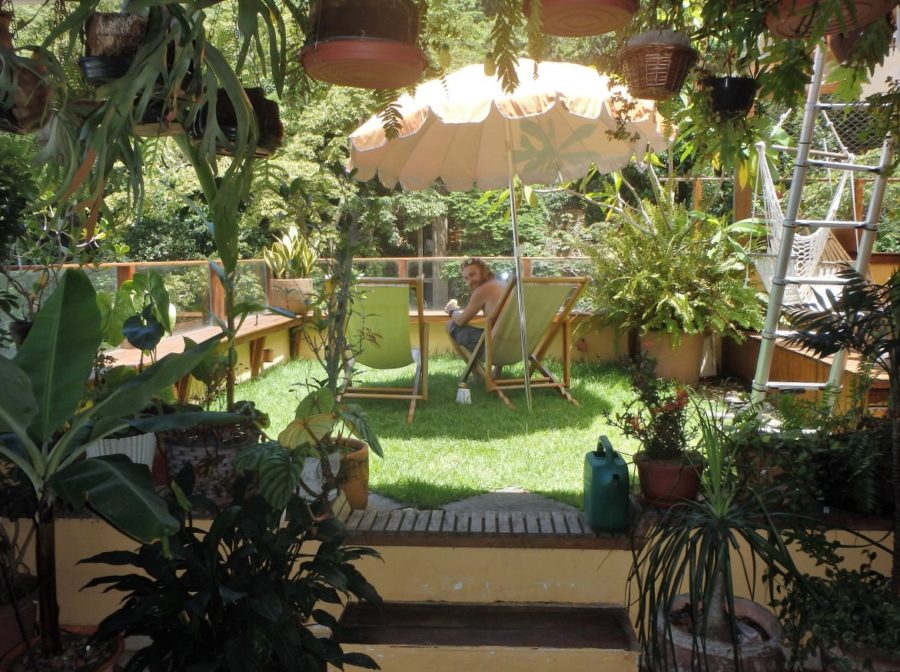
The best advice we can give though is not to book solely based on price. Always read reviews! Some hostels looked great and were cheap for last minute deals which we initially got excited about. On further research we found these were often in questionable locations on the edge of favelas.
Never compromise safety for the sake of a few dollars; it’s just not worth it.
Regardless of where you end up staying however we still do not recommend walking around at night. Travellers should even be weary in groups in certain areas; beaches are a definite no-go after dark.
A final tip
Wherever you want to go in the city, remember that Uber is king. Sometimes it’s good to walk or travel on a local bus. And other times, it’s not.
Be sure to compensate for added transport costs when planning your budget for backpacking in Rio de Janeiro and you shouldn’t have any issues
Happy travels!





